Competitor Research
Understanding your Competition
In this lesson, we’ll be looking at our competition, and what we can learn from them. We shall also answer some questions in the course quiz, about what we’ve learned so far.
This is what we shall cover in the guide:
- Analysing your competition
- Document your findings – Competitor research
1. Analysing Your Competition
Identifying your top competitors is another essential strategy in content creation.
Your competitors are those websites ranking for your target keywords based on the topic you are writing about. In this lesson, we will find out who our top competitors are. Then, gather insights from them.
Google Competitor Search
One way to find your competitors is by searching for your primary keyword in Google.
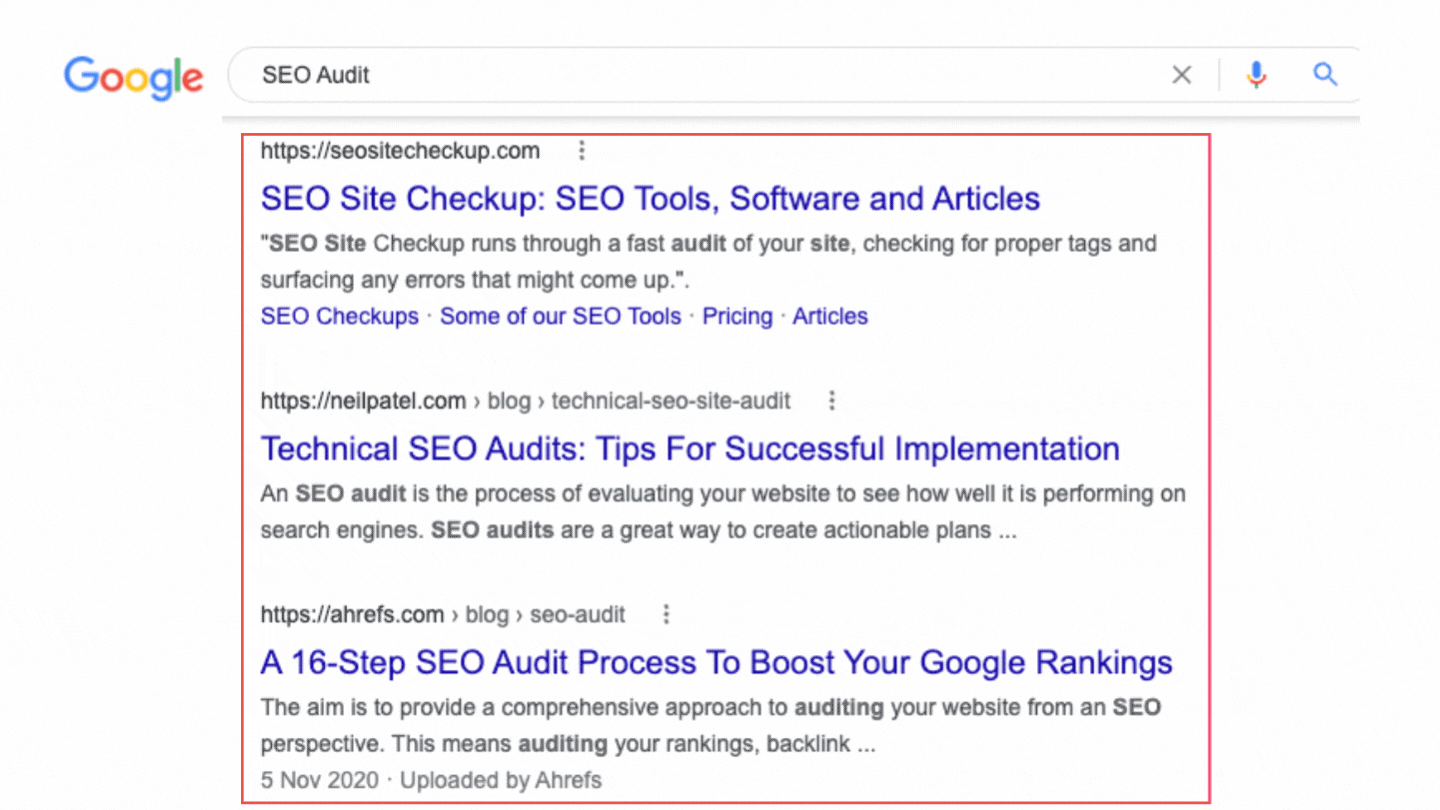
- Begin by typing your keyword into the Google search. In this case, it is “SEO audit.” The generated results show the ranking domains based on your query.
- Concentrate on the top 3 – 5 domains on Google’s first page. These are the ones with the highest organic research as regards our keyword.
Next, pick one of these domains to perform more profound competitive keyword research using Semrush.
Organic Research with Semrush
With this research, you want to find out more about your competitors. What strategies are they using to rank high in search engines? Please see the materials section for more information on how to use Organic research in Semrush.
In our Google search, one of the top competitors ranking for the “SEO audit” keyword is “https://neilpatel.com/blog/technical-seo-site-audit/.” We shall be using this domain for organic research.
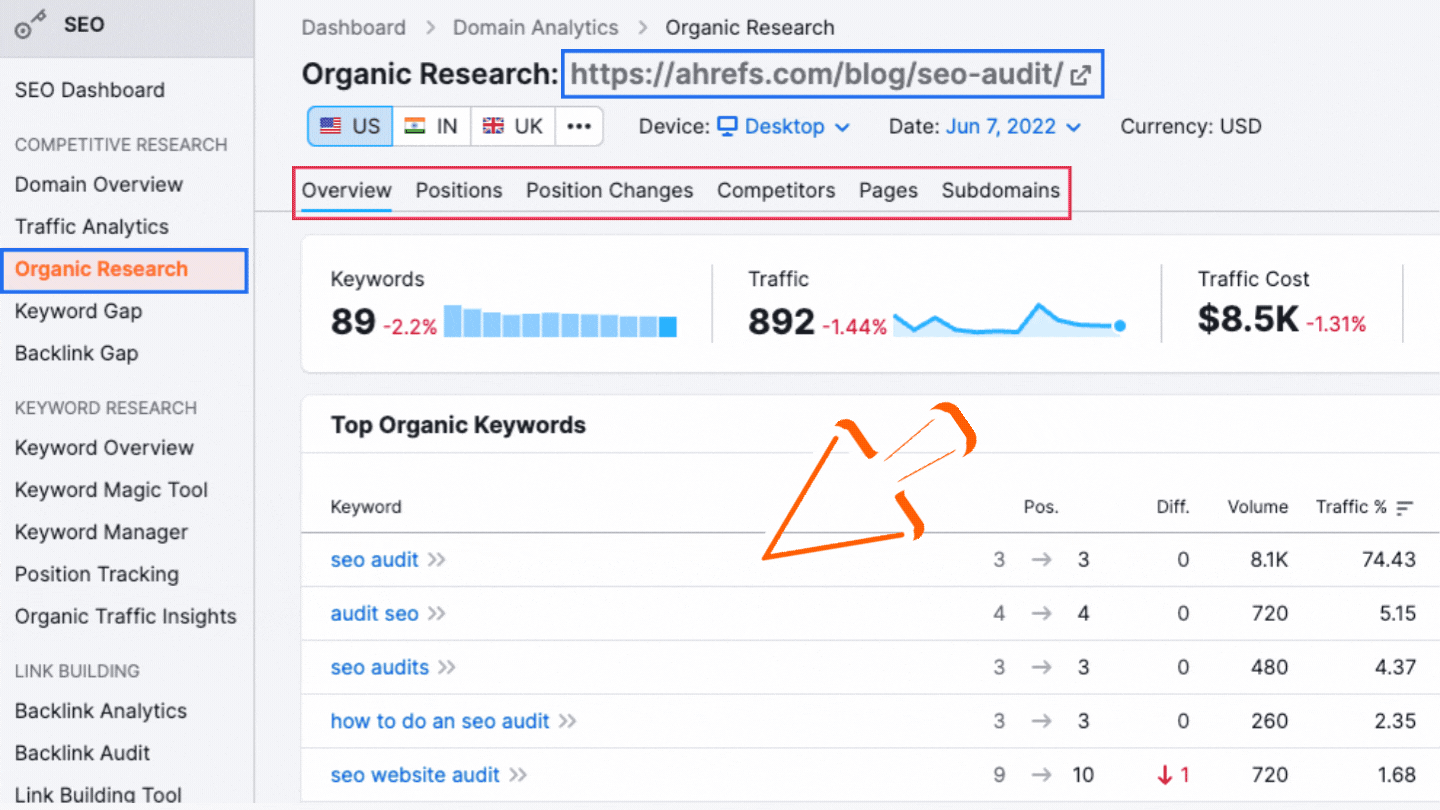
- In Semrush, go straight to the left menu tab. Then, click on the drop-down icon “SEO” to expand the menu, and click the “Organic Research” tab.
- In the search field, type in your target domain. Click “Search.” The results can be filtered in many ways to refine your search results further.
- In the “Competitors” tab, you can see the top competitors of the target domain. You can also do an individual organic search on each of these domains.
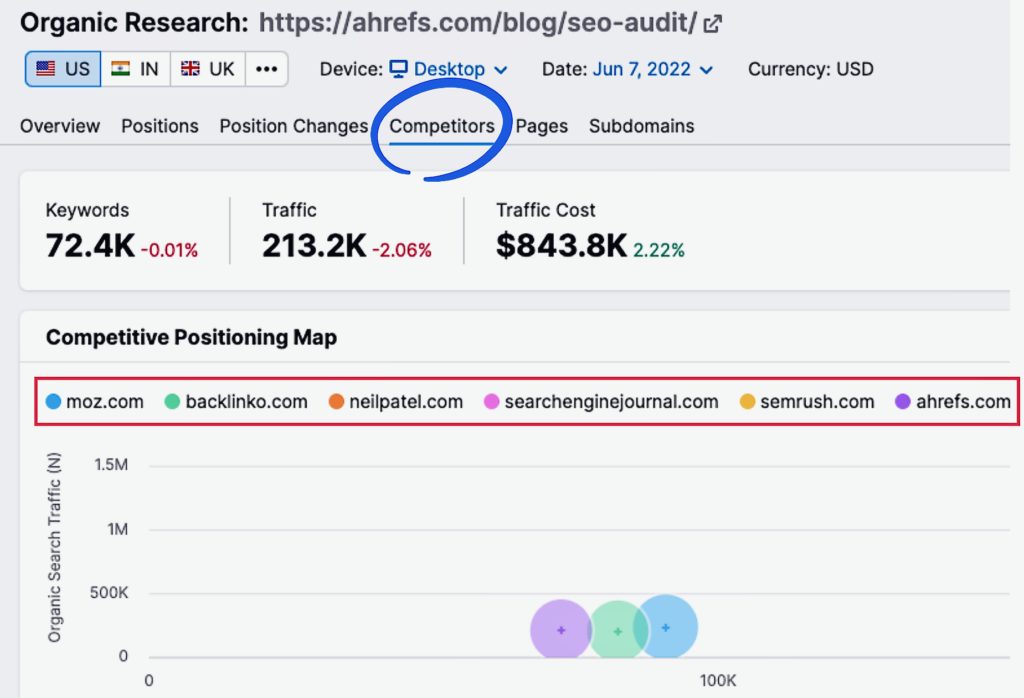
- Lastly, identify some of the high-ranking keywords targeted by the competitor. Add them to the ‘Keyword Manager’. Or use the ‘Export’ tab to download the list of selected keywords for later use. (Applying these keywords enables you to appear in the same search engine results as your competition.)
With organic research, you get an overview of your competitor’s strengths and also weaknesses:
- Keywords targeted by the competition to increase rankings and traffic.
- The highest-ranking pages on the target domain
- The domain’s top competition and their insights
Some Helpful Links
Take a look at these other links for more information.
2. Document your Findings – Competitor research
As our practice is, we need to record all the data collected from our competitor research.
1. Document your findings from the Google search and organic research. We did a Google search of our keyword to find the top domains ranking for it. You can note down these domain names for later reference.
Semrush organic research was done on one of the top domains. This was to find out more insights and data. Export the selected keywords and findings into your Google drive folder.
These files contain data about top Organic Keywords, the number of backlinks, Search traffic per Competitor, and our competitors’ referral domains.
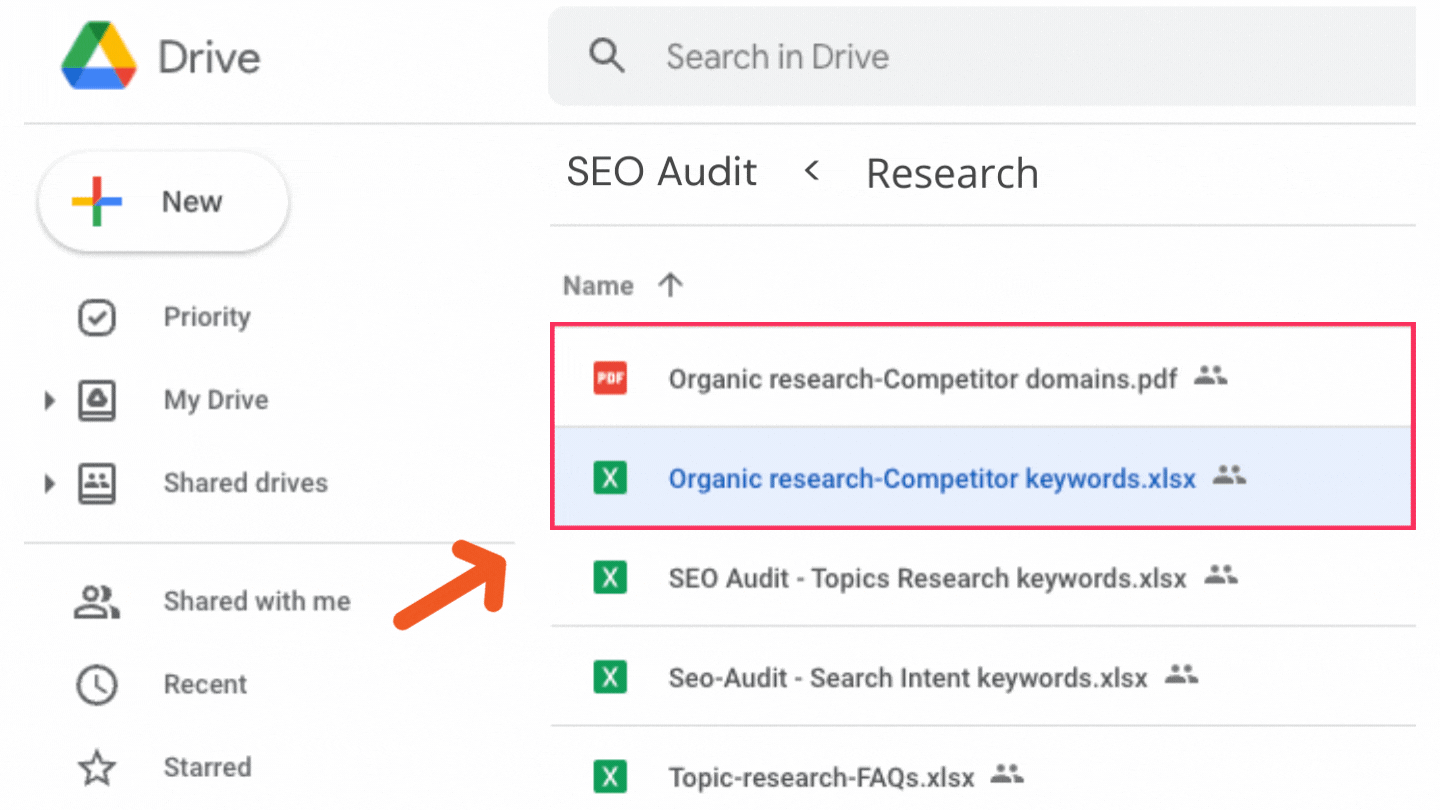
2. Finally, go to your blog checklist template and mark the “Competitor research” step as complete.
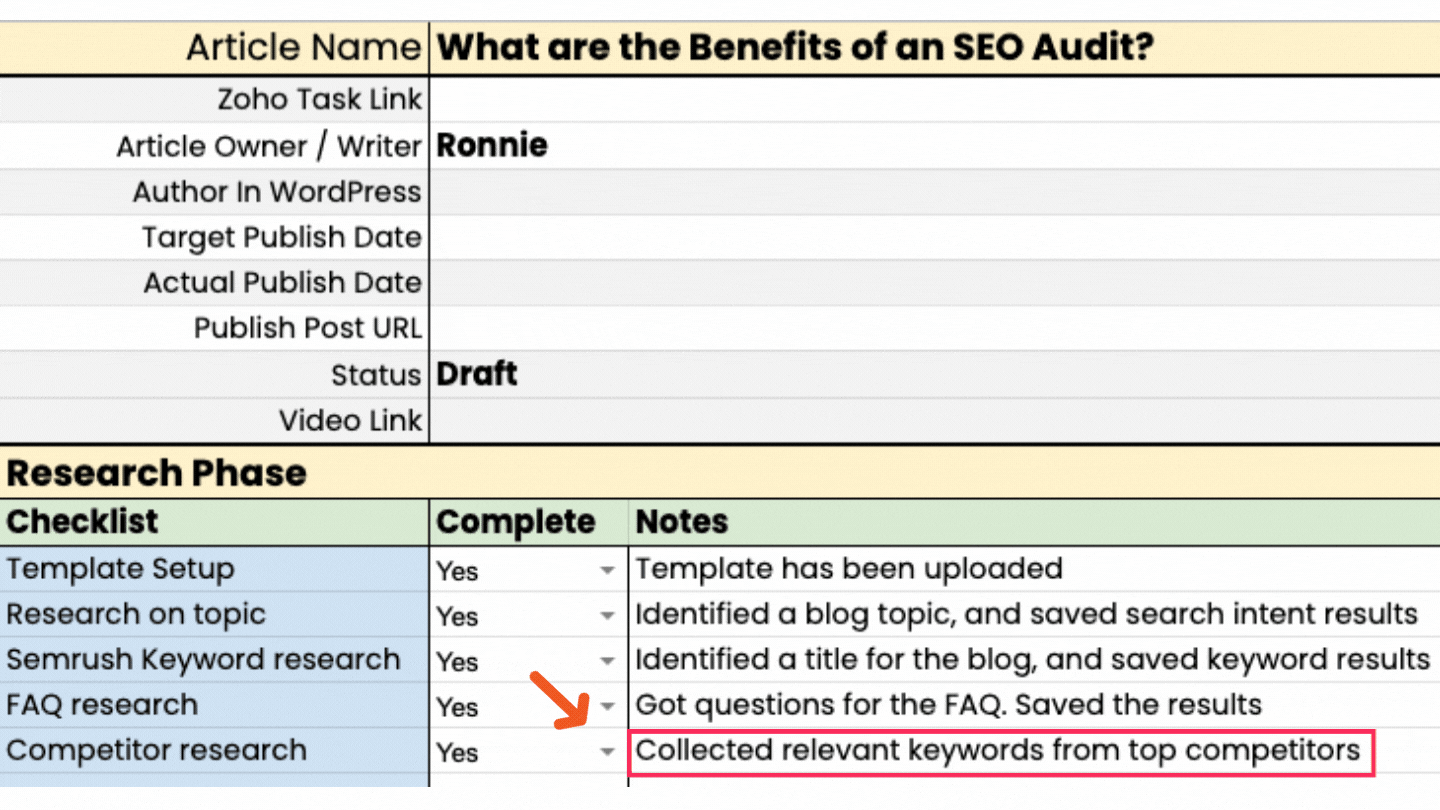
Lesson Summary
In this lesson, we have identified the top competition ranking for our primary keyword. We have also gathered more insights into what these domains are doing to rank high on Google. This includes high-ranking keywords and backlinks.

